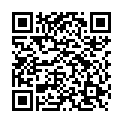|
|
|
| Module code: ABBG51 |
|
4VU (4 hours per week) |
|
5 |
| Semester: 6 |
| Mandatory course: no |
Language of instruction:
German |
Assessment:
Written exam (120 minutes) and term paper
[updated 01.10.2020]
|
Exam recurrence:
The information regarding exam recurrence is found within the exam policy of the study programme (ASPO).
|
ABBG51 Aviation Business (Basic), Bachelor, ASPO 01.10.2015
, semester 6, optional course
ABBG51 Aviation Business (Basic), Bachelor, ASPO 01.10.2018
, semester 6, optional course
|
60 class hours (= 45 clock hours) over a 15-week period.
The total student study time is 150 hours (equivalent to 5 ECTS credits).
There are therefore 105 hours available for class preparation and follow-up work and exam preparation.
|
Recommended prerequisites (modules):
ABBG31 Structure and Functions of the Global Air Transportation Business
[updated 03.02.2020]
|
Recommended as prerequisite for:
|
Module coordinator:
Prof. Dr. Joachim Klein |
Lecturer: Prof. Dr. Joachim Klein
[updated 01.10.2018]
|
Learning outcomes:
After successfully completing this module, students will be able to name and describe IT architecture models and information systems. They will be able to outline selected basic principles of the Internet and to name and illustrate current developments and the expansion of the World Wide Web (WWW).
Students will be able to describe the basics of cloud computing and associate the advantages of this technology with its applications in the air transport industry.
They will b familiar with the operational IT systems and applications (functions and processes) of an airline and be able to use them. Students will be familiar with the functionality of commercially available software systems and will be able to assign IT applications to the functional areas of an airline. They will be familiar with the IT organization of an airline and learn how to use the Information Technology Infrastructure Library (ITIL) method. Finally, students will have learned to develop a database for airline ticketing as part of a practical exercise and link the basic knowledge with an application in aviation practice.
[updated 01.10.2020]
|
Module content:
1. Basics
1.1. IT architecture models and information systems
1.2. Internet (basics, dissemination, future developments)
1.3. Cloud computing (basics and applications)
1.4. IT trends in the air transport industry
1.5. Cloud computing in the air transport industry
2. IT systems and applications
2.1. Network planning systems
2.2. Marketing, sales & distribution systems
2.3. Passenger management systems
2.4. Flight operations systems
2.5. MRO systems
2.6. Enterprise systems
2.7. Other systems
3. IT organization
3.1. IT service management (ITSM)
3.2. Standardization through the Information Technology Infrastructure Library (ITIL)
3.3. Examples of IT organizations
4. Practical exercises: Design and implementation of a database for airline ticketing
[updated 01.10.2020]
|
Teaching methods/Media:
Lecture, discussions, practicals exercises, group work
[updated 01.10.2020]
|
Recommended or required reading:
- Schönbächler, M., Pfister, C. (2011): IT-Architektur: Grundlagen, Konzepte und Umsetzung, MV-Verlag, Münster,
- Schneider, G., Evans, J. (2010): New Perspectives on the Internet: Comprehensive, Cengage Learning, Boston,
- SITA (2014): The Airline IT Trends Survey,
- SITA(2014): Passenger IT Trends Survey,
- SITA (2014): Baggage Report 2014,
- Doganis, R. (2006): The Airline Business, Routledge,
- LH Systems (2014), http://www.lhsystems.de/solutions/airline-solutions,
- Office of Government Commerce (2010): Introduction to the ITIL Service Lifecycle, The Stationery Office, Norwich,
- Bernard, P. (2014): IT Service Management Based on ITIL® 2011 Edition, Van Haren Publishing, Zaltbommeln,
[updated 01.10.2020]
|


